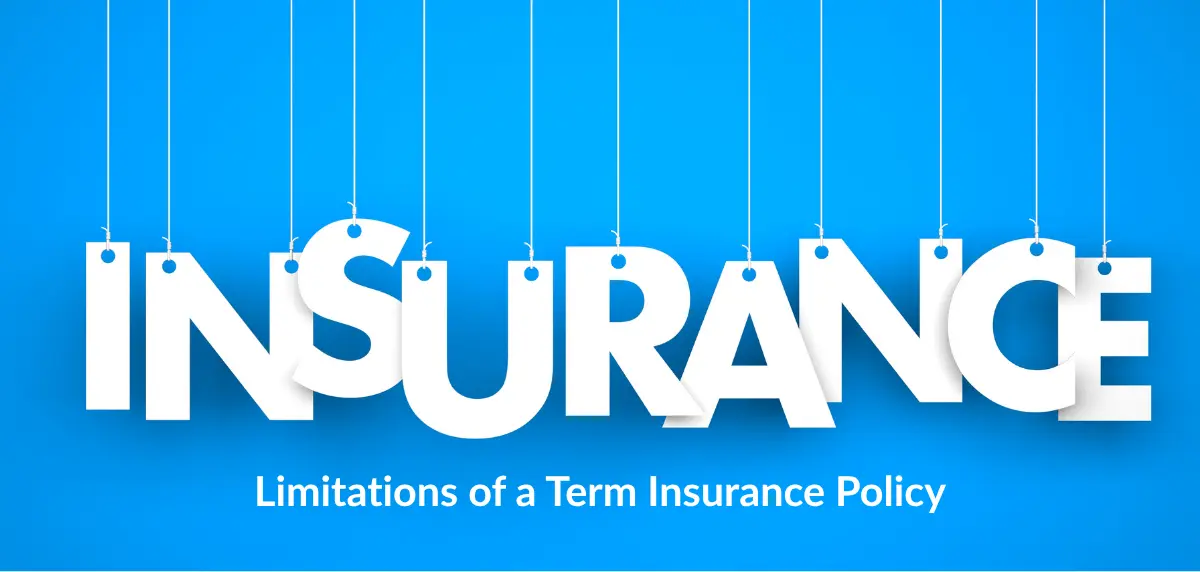Term insurance is one of the most affordable and straightforward ways to financially protect your loved ones. It offers significant coverage at a relatively low premium. But while the plan serves a vital purpose, it is not without its drawbacks. To get a detailed understanding of term insurance, it is also important to be clear about its limitations. Let’s explore some limitations of term insurance to help you make a well-informed decision.
1. No Survival Benefit
One of the biggest limitations of term insurance is that it does not offer any maturity benefit. If the policyholder survives the policy term, no money is returned, unless you have opted for a specific policy like zero-cost term insurance where the premiums are returned at the end of the term. For many, this may feel like paying premiums for years with no financial return.
2. Coverage Ends with Policy Term
The meaning of term insurance includes the fact that it is for a specific period or ‘term’ only. This means once your policy term ends, your coverage ends too, regardless of your financial situation or age. This is in contrast to whole life insurance where the coverage continues until you are 99 years of age.
In term insurance, if you want to extend the policy or start a new one at an older age, you may find the premiums unaffordable or face health-related rejections. This fixed tenure feature is one of the practical limitations of a term insurance policy that many may overlook.
3. Premiums Increase with Age
If you delay purchasing a term insurance plan, you could end up paying much higher premiums later. Age is a critical factor when it comes to the cost of the plan. The longer you wait, the more expensive the plan gets. For people in their late 40s or 50s, buying term life insurance can be considerably more costly than for someone in their 20s or 30s.
4. Limited Flexibility for Wealth Building
Unlike endowment or unit-linked plans, term insurance does not offer the opportunity to build wealth or offer investment returns. It is meant purely for protection. You have the option to add a term rider like a waiver of premium rider or critical illness rider. However, term plans may still fall short if you are looking for a plan that serves both protection and growth.
While this is also a strength, as it keeps the costs low, it is also a limitation of term insurance for those seeking dual- or multi-purpose products.
5. Necessary Medical Tests and Health Declarations
When applying for term life insurance, you may need to undergo medical tests or declare existing health conditions. If a policyholder fails to disclose a pre-existing health issue or any other key information, it may lead to claim rejection later.
In addition, insurance companies also look at your risk profile closely, which may affect your ability to buy a policy or get the desired coverage.
6. Difficult for Certain Categories to get Coverage
While the eligibility criteria for term insurance are simple, it can be a bit difficult for certain categories of people to get term insurance. If you are a senior citizen, smoker, or have a critical illness, buying a term plan may be difficult or expensive.
If you enter a high age into a term insurance calculator, you are likely to get a high premium estimate as well. This is because older individuals are considered high-risk individuals. Even when they manage to get a policy, the coverage amount might be limited, and the premium may not feel worth the benefit.
7. No Surrender Value
Another major limitation of a term insurance policy is that it typically does not offer any surrender value. If you decide to discontinue your policy before the end of its term, you will not get any money back. Unlike traditional savings plans or endowment policies that return a part of the premiums if surrendered early, term plans are pure protection products. This means you lose all the premiums paid if you miss premium payments.
Term insurance offers solid financial protection at a reasonable cost. However, the main benefits of term insurance - its low cost and simplicity - can also make it limiting for those who seek more. Regardless, knowing these gaps can help you make smarter choices. If you want to add a term plan to your portfolio, consider making it a part of your broader financial plan and not the sole backup choice.





















